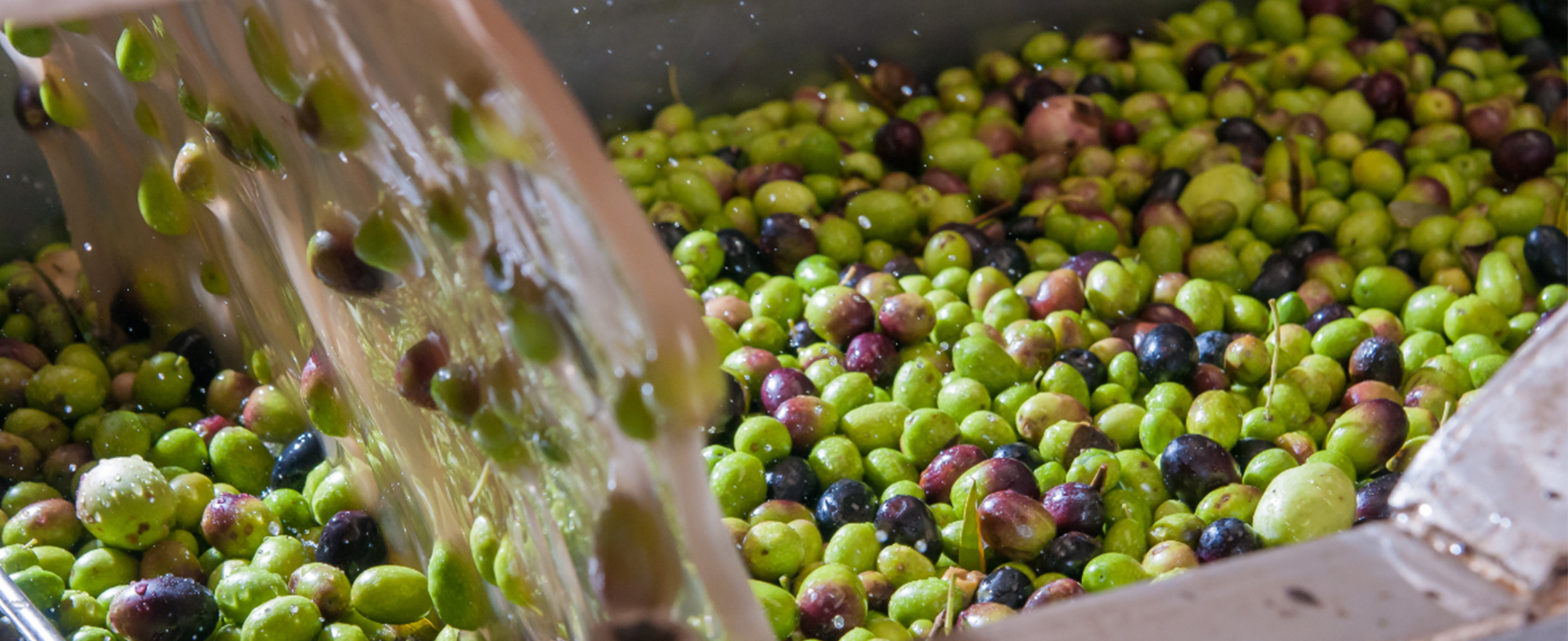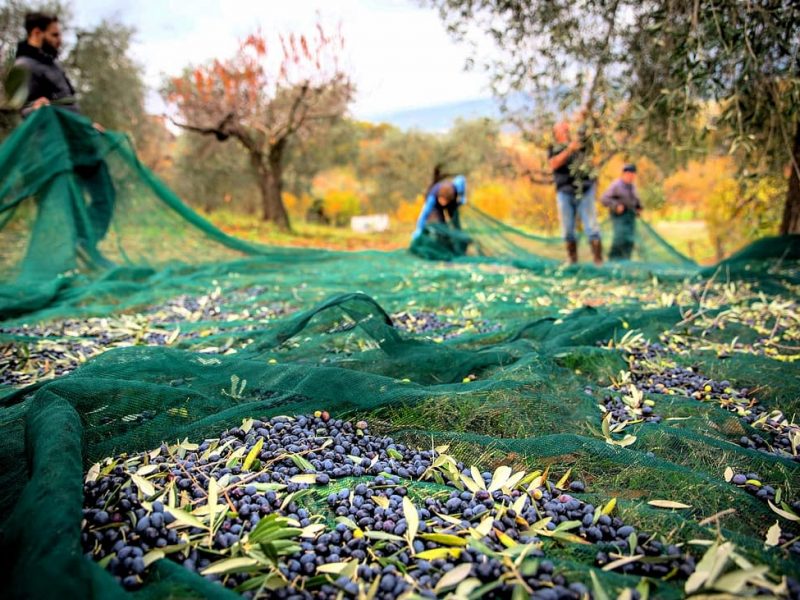Harvesting and transport:
One of the keys to achieving an excellent oiling result is the appropriate harvesting period of the olive fruit and the time of its transport to the mill. Once we have identified the ideal level of maturity of the fruit having a healthy appearance, good size, and color, then the harvest is allowed to begin. We choose to harvest the olives by mechanical means or by hand and then place them in perforated plastic crates, thus taking care of their stress, through which they are transported directly to the mill.
Cleaning:
At this stage the olives are taken to the olive mills, where leaves and foreign bodies are removed and then washed before moving on to the next stage.
Grinding of the wrist:
The olives are conveyed by belt to a special machine called a crusher. The purpose of milling is to tear the flesh cells and facilitate the release of the olive oil enzymes.
Fermentation:
The next step is the fermentation of the fruit. Fermentation is the process of slowly stirring and mixing the ground olives, usually for 20 to 40 minutes. Stirring allows the small droplets of olive oil released by the milling process to clump together and separate more easily. Fermentation always takes place under controlled atmospheric pressure and the fermentation temperature does not exceed 22-25 °C / 71,6 - 77 °F (cold pressing), which is necessary to maintain the high quality and nutritional value of the olive oil.
Separation:
In this stage the olive yeast is transferred to a special centrifugal machine where the vegetable juice is separated from the rest of its components.Then the mixture of vegetable juice resulting from the first centrifugal machine passes through another centrifugal stage from which the pure olive oil is obtained.
Storage and standardization of olive oil:
After the end of the production process, the olive oil is transported by pumps suitable for food transport to a specially designed area, a standardization building with all the necessary certifications. So after the olive oil has been produced we do the necessary chemical analyses and organoleptic measurements to ensure the high quality of the final product. We then divide the olive oil into batches according to its variety and quality characteristics and place it in stainless steel tanks. Finally, we use automated bottling machines to fill the bottles and cans with extra virgin olive oil. The final product is sealed, labeled, and branded with the batch code of the batch it belongs to and its expiry date.




